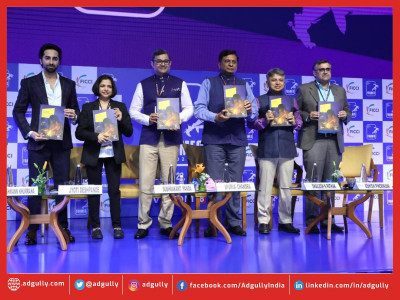Exhibitors saw a huge bounce-back in Q3FY22
In 2021, the media and entertainment sector will continue to evolve as a result of technology advancements, changing generational attitudes, and the worldwide pandemic's ongoing effects. People sought more media and amusement at home during COVID-19 outbreaks, shunning bigger in-person activities. Even during the healthier summer, digital media engagement remained high, indicating that the epidemic has just exacerbated pre-existing tendencies toward the digital environment.
The larger socioeconomic processes underlying the contemporary era appear to be merging with technology and intensifying change as we approach 2022. This encourages greater innovation and competition, but it also puts pressure on business models to adapt to changing consumer preferences. Karan Taurani, Senior Vice President, Research Analyst (Media, Consumer Discretionary & Internet), Elara Capital emaphasizing on cinema exhibitors explained;
Blockbuster times ahead
• Box office momentum to continue in the near term:
Exhibitors saw a huge bounce-back in Q3FY22 as footfalls recovered sharply to 61% of pre-COVID levels, led by a slate of large-budget films that surpassed expectations on collections. COVID Wave III was short lived and impacted performance only for 8-10 weeks. We expect growth momentum to continue for exhibitors post March 2022, on: 1) restriction withdrawal in key states, 2) allowing 100% occupancy (half of the states moved to 100%), 3) likely raising film release window to 6- 8 weeks (four weeks, currently), 4) low/nil COVID-related fear, with a sharp drop in caseload – This may prop consumer sentiment and 5) a strong content pipeline across genres with many large-budget films.
• Distributor share may revive on upbeat occupancy prospects:
States that contribute 33% to revenues for Hindi/English Box Office are open with 100% occupancy, as per our analysis. Delhi and Maharashtra circuits contribute 37% to the Box Office. We expect these states to move to 100% occupancy by March’22. Thus, at least 75% of the Box Office territories may open with 100% occupancy. This may revive distributor share to pre-COVID level and propel producer confidence as regards releasing many large-budget films.
• Higher probability of upgrades:
Our estimates for PVR/Inox currently factor in a revenue growth of 22%/29% in FY24E versus pre-COVID levels and an EBITDA growth of 22%/33% in FY24E versus pre COVID levels. We expect some dip in exhibitors’ spend per head (SPH) metric as normalcy sets in. A 24% growth in Q3 versus pre-pandemic level was led by strong Hollywood content performance – Spiderman breached INR 2bn Box Office collections in India. We believe even sustained SPH may augur well for EBITDA upgrades versus our estimates.
• Watch for ad revenue recovery – Maintain BUY on PVR/Inox:
Ad revenues remains the other monitorable – A Covid-led price cut of ~70% was seen. We expect ad revenue to fully recover only towards FY24E, but some positive surprise on this metric may catalyse upgrades as it drives substantial EBITDA growth. We raise FY24E EBITDA estimates for PVR/Inox 6.1%/6.1% factoring in: 1) higher occupancy on strong content pipeline/content backlog (may well last for next 18 months) and 2) likely increased screen addition – Covid had diminished screen additions in the past two years due to an uncertain business environment. We maintain BUY on PVR/Inox with a higher TP of INR 2,375/575 (from INR 2,100/520, respectively), based on 14x/11.5x one year forward EV/EBITDA.
• Content – Trend reversal in favour of Hindi, which may outperform regional:
Since Covid outbreak, trends have shown that regional content has performed favorably versus Hindi content. This has been primarily due to: 1) large-budget regional films being released consistently and 2) lower restrictions (occupancy cap) in regional states, as compared with key Hindi circuits (Delhi and Maharashtra).
However, we expect this trend to reverse in favour of Hindi as almost eight large-budget films are slated for release in Q1FY23 alone. This may lead to Hindi genre gaining Box Office dominance.
As per our early estimates, the Hindi Box Office may grow 22% YoY in H1FY23E and may revive to pre Covid levels in FY23 (full-year basis). This is after factoring in a tepid performance by small/medium-budget films, which may take some transition time before reviving to pre-Covid levels.
We believe small/medium-budget films have struggled to deliver due to: 1) poor content, 2) lower audience frequency (fear factor) and 3) lower release window. We expect such factors to reverse, which may augur well for small/medium-budget films in the medium term. Expect the Hindi Box Office to grow in FY23 if small/medium budget films surprise positively. This may lead to Hindi Box Office surpassing INR 41bn in FY23E (highest collections at INR 39bn in FY20), which may then be the highest Box Office collection, historically. In terms of talent, tier I actors have already returned to pre-Covid Box Office collections. However, the next tier (tier 2 and tier 3 actors) is still down 70% versus pre-Covid Box Office collections.
• Global Box Office – Positive surprise:
As per Gowerstreet report, ~90% of the screens are now open globally, with APAC having ~95% of its screens open. In terms of overall Box Office performance, China Box Office has recovered to ~82% of pre-pandemic levels in CY21, whereas the US has revived a mere 35% in the same period.
Other geographies, excluding China, have also recovered ~42% in CY21 versus pre-pandemic levels. However, Box Office momentum has picked pace in Q4CY21, helped by the release of Spiderman that has reported a global Box Office of USD 700mn, the sixth highest gross collection, historically.
This instils confidence in the cinema medium, globally, indicating that cinema will always be the preferred mode for consuming large-scale content. US Box Office revenues have reported a recovery of 68% versus pre-pandemic levels, largely in line with Indian multiplexes (68% Box Office revenue recovery).

















Share
Facebook
YouTube
Tweet
Twitter
LinkedIn